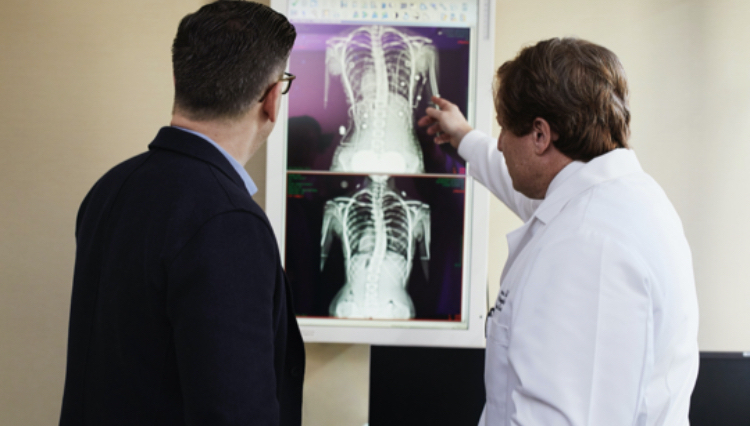Percutaneous Lumbar Fusion
What is Percutaneous Lumbar Fusion?
Percutaneous lumbar fusion is a surgical procedure used to correct problems with the small bones in the spine (vertebrae). This is done to eliminate painful motion or to restore stability to the spine.
Here’s a quick breakdown of the phrase – Percutaneous Lumbar Fusion:
- Percutaneous: a minimally invasive surgical approach using very small skin incisions
- Lumbar: this region of the spine is referred to as the lower back.
- Fusion: a process in which bones “fuse,” or grow together into one bone
The concept of fusion is similar to that of welding in industry. Spinal fusion surgery, however, does not weld the vertebrae during surgery. Rather, bone grafts are placed around the spine during surgery. The body then heals the grafts over several months —similar to healing a fracture—which joins, or “welds,” the vertebrae together.
The fusion may or may not involve supplemental hardware (instrumentation) such as plates, screws and cages. Instrumentation is sometimes used to correct a deformity, but usually is used simply as an internal splint to hold the vertebrae together while the bone grafts heal.
When performed with a minimally invasive approach (such as percutaneous lumbar fusion), the procedure uses specialized instruments and techniques that minimize cutting and other disruption of the body’s tissues. Lumbar (lower back) fusion is usually performed in your lower back.
When is this Procedure Recommended?
Percutaneous lumbar fusion is usually recommended only when your doctor can pinpoint the source of your pain. To do this, your doctor may use imaging tests, such as X-rays, computerized tomography (CT) scans, and magnetic resonance imaging (MRI) scans.
They may be recommended by your doctor to strengthen the spine and prevent painful movements caused by spinal deformities or degenerative disc disease.
What is a Minimally Invasive Surgery (MIS)?
Traditional surgery is known as open surgery and involves one large incision down the center of your spine. A larger incision means your surgeon is able to perform surgery with a clear view.
Minimally invasive surgery (MIS) is an innovative approach with more than a decade of clinical history. It’s performed with two smaller incisions on either side of the affected vertebrae and involves the use of a surgical microscope, live x-ray or computer aided navigation and special surgical instruments.
Depending on your problem, your surgeon might use different approaches to get to your vertebrae like in back (posterior fusion), abdomen (anterior lumbar interbody fusion) or both.
More and more surgeons are recommending minimally invasive surgery (MIS) for their patients. MIS offers a number of potential advantages over traditional open lumbar fusion.
Minimally invasive procedures are generally associated with:
- Smaller incisions
- Avoiding significant damage to the back muscles and soft tissue surrounding the spine
- Reduced blood loss
- Lessen scarring
- Reduced postoperative pain
- Quicker recovery time
- Shorter hospital stays
- Lower risk of infection
There are several ways to treat lower back pain. Not all back problems are potentially helped with MIS. It all depends on your condition. Your doctor will discuss this with you.
Follow Us
Request An Appointment
Address: 3273 Claremont Way, Ste. 201, Napa, CA 94558
Phone: 707-603-1042

